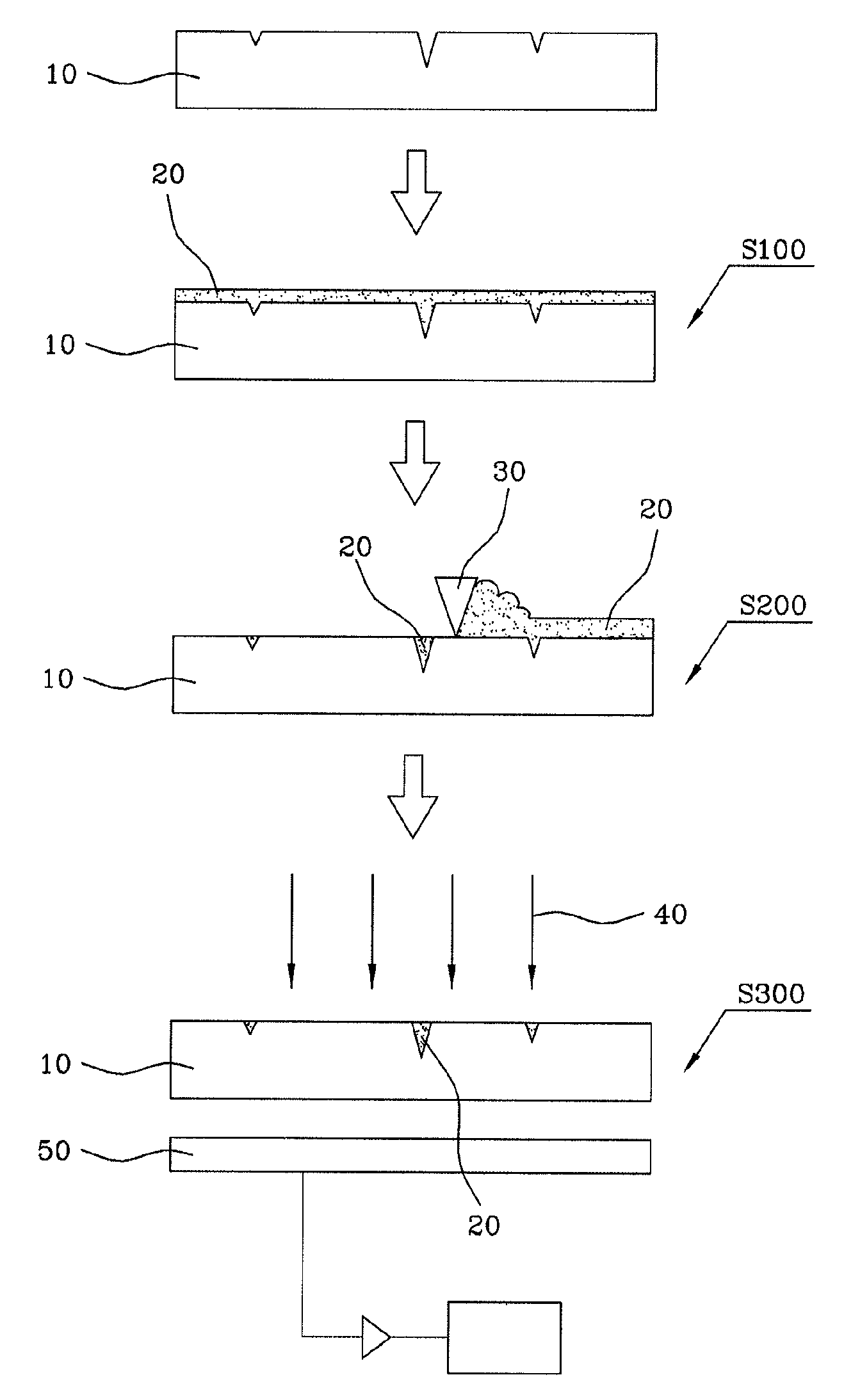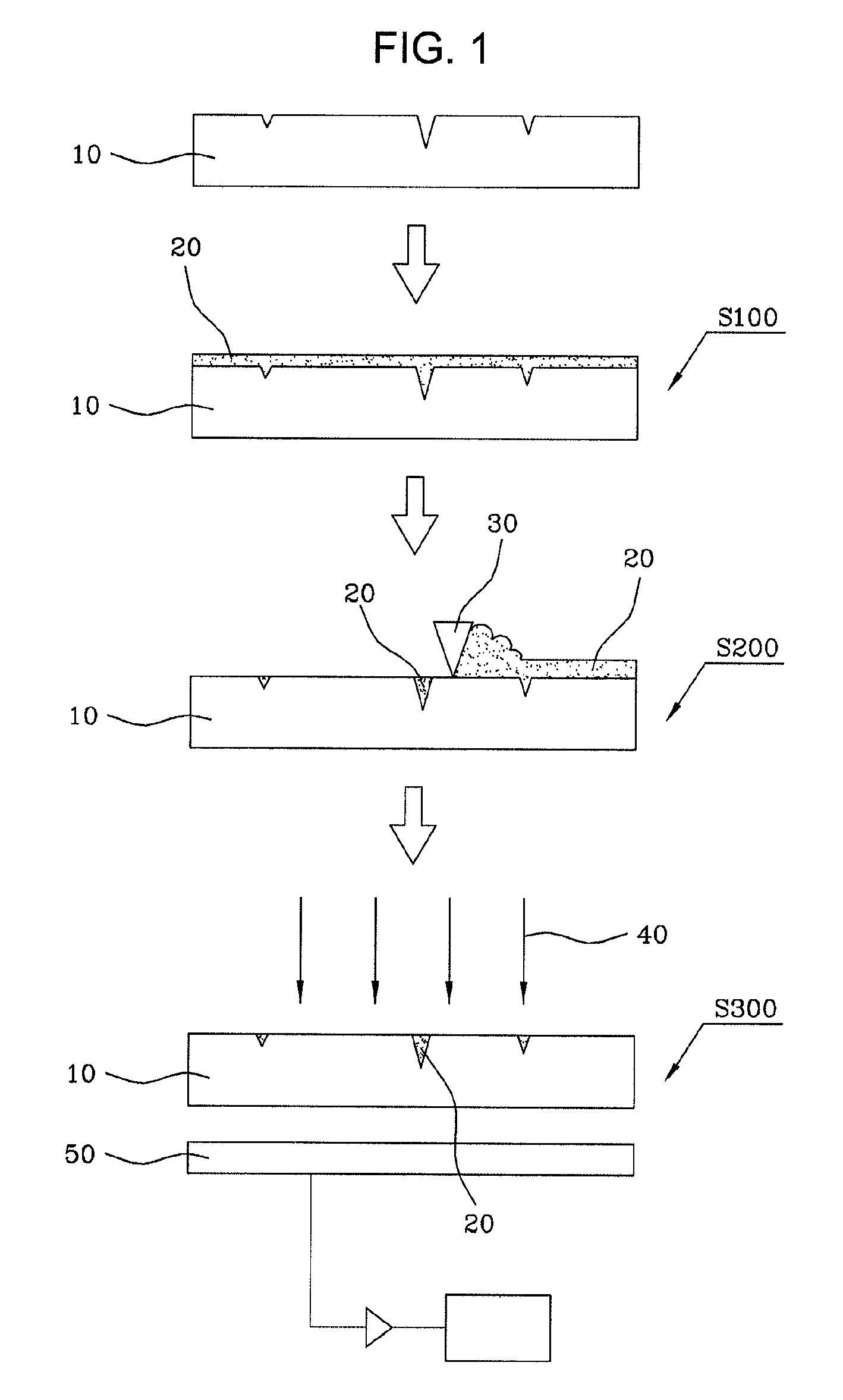Method of detecting fine surface defects
a technology of fine surface defects and surface, applied in the direction of material analysis using wave/particle radiation, x/gamma/cosmic radiation measurement, instruments, etc., can solve the problems of difficult to consistently apply penetrant on the subject, penetrant is subject to contamination, penetrant on the surface, etc., to improve the inspection efficiency of fine surface defects
- Summary
- Abstract
- Description
- Claims
- Application Information
AI Technical Summary
Benefits of technology
Problems solved by technology
Method used
Image
Examples
Embodiment Construction
[0016]Hereinafter, the present invention will be described in detail with reference to the attached drawing. In the description of the present invention, when it is determined that the technical point of the present invention would be made unclear by a detailed description of commonly-known technologies, such detailed description of commonly-known technologies will be omitted.
[0017]Further, the terms used herein are defined in consideration of the functions in the present invention, and can be changed depending on the intentions of users, or precedents. Therefore, the definition of the following terms must be understood based on the entire content of the specification of the present invention.
[0018]FIG. 1 is a process view showing a method of detecting fine surface defects according to the present invention.
[0019]As shown in FIG. 1, the method of detecting fine surface defects according to the present invention includes the steps of applying (S100), squeegeeing (S200) and detecting ...
PUM
 Login to View More
Login to View More Abstract
Description
Claims
Application Information
 Login to View More
Login to View More - R&D
- Intellectual Property
- Life Sciences
- Materials
- Tech Scout
- Unparalleled Data Quality
- Higher Quality Content
- 60% Fewer Hallucinations
Browse by: Latest US Patents, China's latest patents, Technical Efficacy Thesaurus, Application Domain, Technology Topic, Popular Technical Reports.
© 2025 PatSnap. All rights reserved.Legal|Privacy policy|Modern Slavery Act Transparency Statement|Sitemap|About US| Contact US: help@patsnap.com


